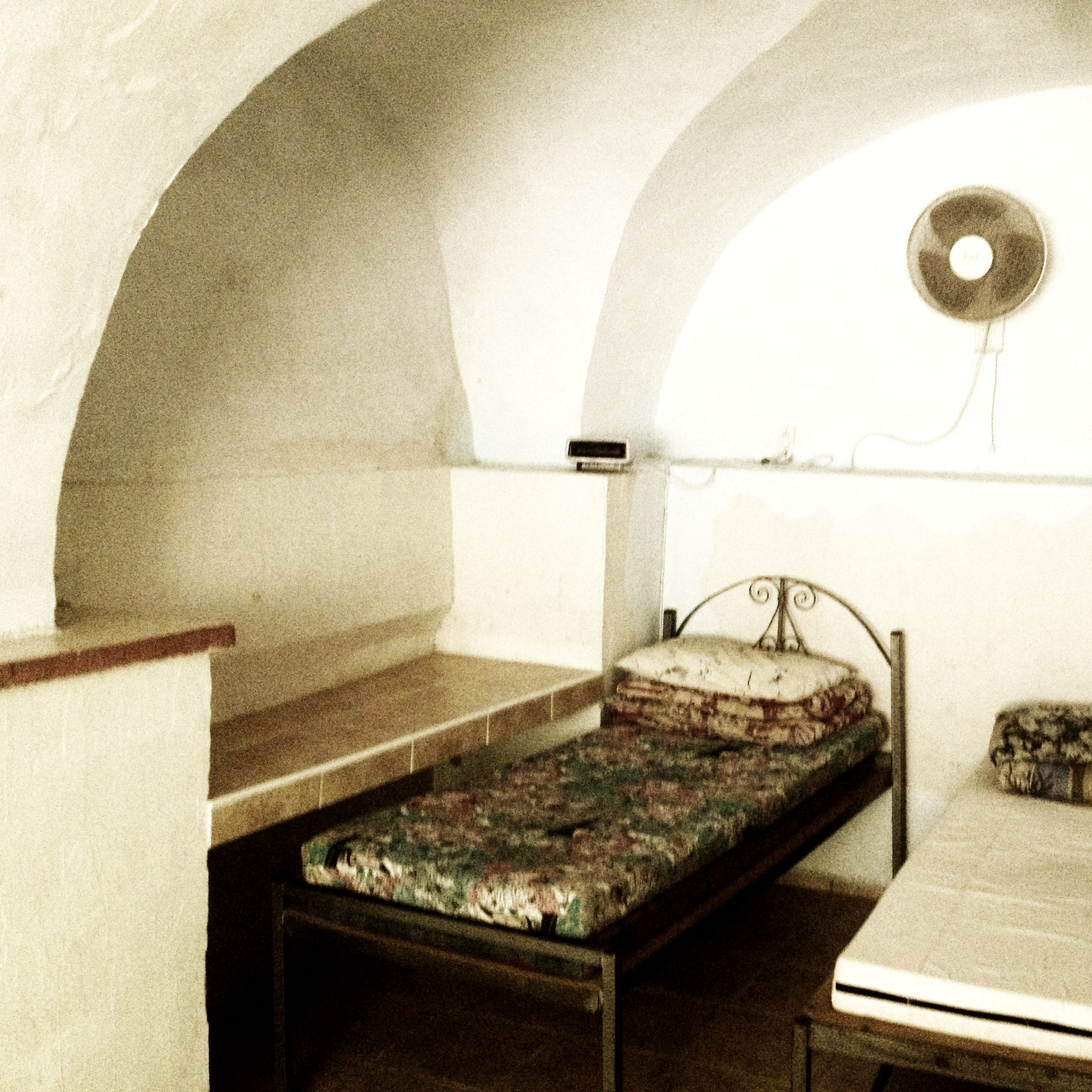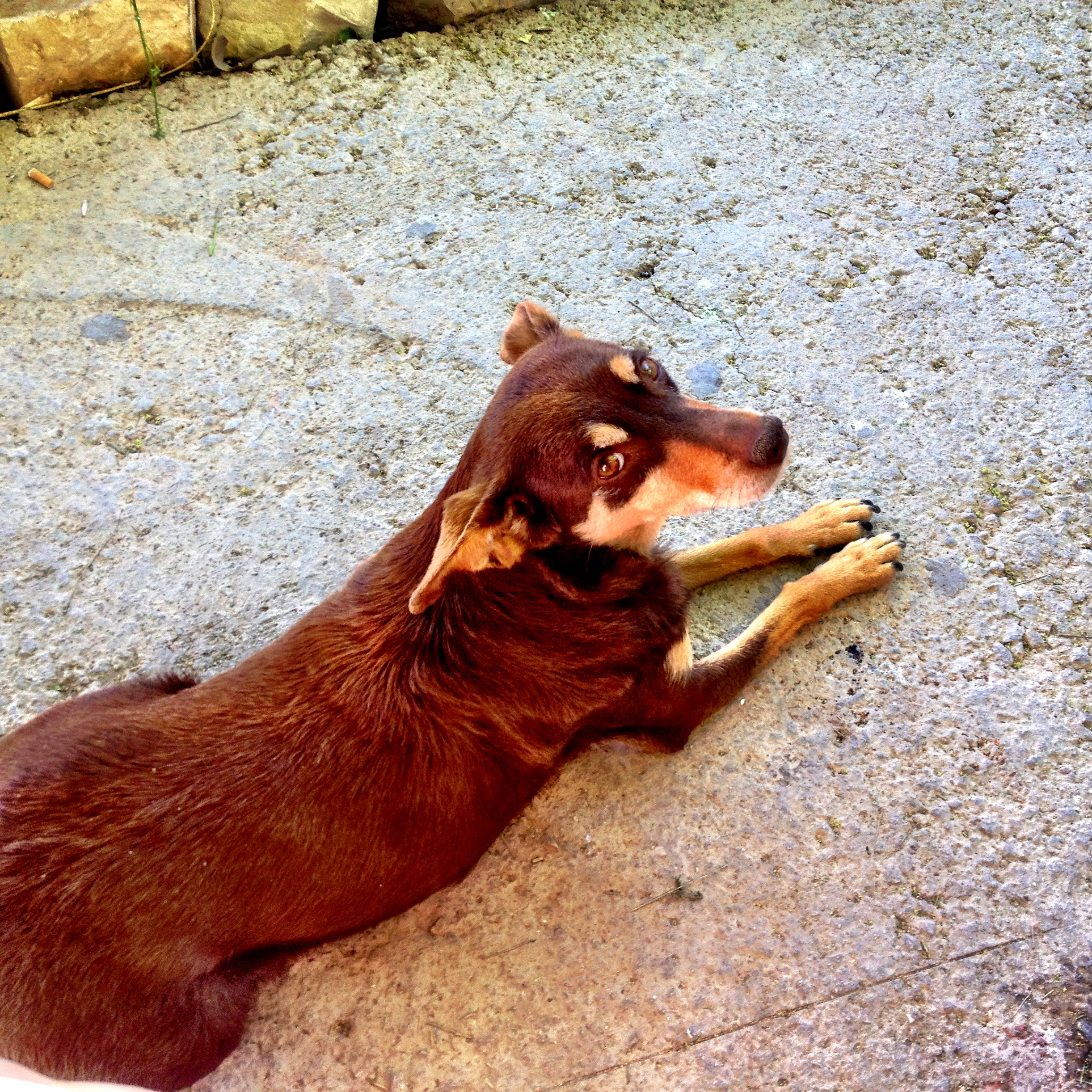
Abstract: Since September 17th 2011, the Occupy Wall Street movement has inspired, confused, and empowered people across America. It has illuminated an important aspect of urbanism: conflicting goals for the use of publically dedicated urban space in the United States. Public space is conceptually at the heart of the Occupy movement. The vision of reclaiming public space has been a metaphor for reclaiming power since the movement’s inception. Providing for political dissent is one of the founding principles of America, but this right has never been secure. The Middle Eastern countries of the Arab Spring revolutions have not tolerated groups of any size publically speaking against their government, and American authorities currently tread perilously close to making the same mistake. The United States has a strong history of preserving the institution of urban commons under public control, but regulation of publically dedicated spaces has increased dramatically. In modern America these spaces are increasingly privately owned, heavily programmed, or dominated by stringent liability regulations. Urban planning can and should be instrumental in making our cities democratically controlled and publicly accessible. Occupy Wall Street has provided planners with a blueprint for creating socially equitable space that tangibly, truly belongs to the American people.
Keywords: Occupy Wall Street, Public Space, Social Justice, Urban Planning, United States
Part One: Theory
Land is power. As old as civilization itself, the right to control land has signified the security of continued survival and the freedom of self-determination. Throughout history, the control of land meant the ability to produce food to provide against future uncertainty, it meant the ability to construct housing facilities, and access to natural resources such as water, vantage points, building materials, fuel, and game. Land has remained the most concrete and overt, the most primal, symbol of power.
Occupy Wall Street uses peaceful occupation of public space as a multifaceted tool of grassroots empowerment. The movement claimed that power not only in its occupation of publically dedicated land, but also in its choice of location. It chose to occupy Zuccotti Park, near New York City’s famous Wall Street financial district, to create a visible contrast with America’s iconic corporate bureaucracies. The New York Stock Exchange and the other financial markets at Wall Street, the policy and legislation that supports them, and their collective culpability in the 2007-2010 financial crisis, is the target environment of the Occupy Wall Street movement. As a strategy for being seen and heard in an environment where the movement could have the most contrasting socio-economic and ideological backdrop, Occupy Wall Street was an instantaneous success.
When I first saw the Occupy Wall Street encampment at Zuccotti Park in New York’s financial district, I was immediately struck by the rarity of seeing people using public spaces in American urban centers for anything other than getting to and from work. Before the protests, Zuccotti Park and its surrounding streets were filled with professional men and women during morning, evening, and lunch rush hours, hurrying to and from work, hastily eating their lunches so they could get back to business (Austin, 2012). In New York City’s imposing financial district, with its monumental expanses of stone, concrete, and glass, it’s famous bronze “charging bull” sculpture, and little Zuccotti Park, geometrically paved over and planted with a uniform stand of manicured trees, it is clear who really owns the public spaces.
Calling a public space “programmed” means that there are specific intended uses that the designer of the space had in mind. “A program for an environment, whether a park, an office building, or a mall, is the menu of activities that the space is designed to facilitate.” (Austin, 2012) To the extent that programming is a reaction to the specific needs of a space, it is an appropriate consideration. Hiking trailheads, for instance, benefit from drinking fountain and restroom facilities. Streets with bike paths need bike racks. Sidewalks should be designed to be both safe and comfortable for pedestrians. However, urban spaces are increasingly designed for highly specific activities, with little truly flexible space for creative or adaptive use. This increase in programmed space is enhanced by New York’s Privatization of Public Spaces Incentive program, which gives legal benefits to developers in high-density areas for providing spaces for public access. Programming space is also an approach to addressing security issues: deciding whom the developer is intending to serve, and what activities the developer would like to encourage, are issues that are usually implicitly addressed by a combination of design and regulation.
Privately owned public spaces such as Zuccotti Park are situated in an amorphous legal no-man’s land, due to a lack of clearly defined regulations, the loophole that allowed Occupy Wall Street to set up camp. There was an obvious breach of the owner’s intentions for how the space should be used. In lieu of the Occupy Wall Street encampment, Zuccotti Park’s legal owners, Brookfield Office Properties, wanted to “restore the park to its intended purpose [of passive recreation].” (Berg, 2011) As political protest was ostensibly one of the intended purposes of civic space throughout American history, what the Occupy Wall Street protests have done is to highlight how Zuccotti Park is not a civic space. “First Amendment protections don’t really apply when the owners of a space are non-governmental.” (Reynolds, 2011) Thus, Occupy Wall Street has shown the world that the phenomenon of privatized public spaces are slowly taking away the civic spaces, and the rights that go with them, from the American public.
So what’s going on here? How have private interests come to be in such conflict with community interests in the public realm? Big business, structured for economic gain, has been granted by the American government the right to own what were once public institutions, “public spaces that are not really public at all but quasi-public, controlled by their landlords.” (Kimmelman, 2011) Private businesses are not structured with the goal of protecting public interest, but of making money. A financial district where people don’t act out, where people are encouraged to move along to work, and discouraged from eating a leisurely lunch in the park, is simply aimed to increase productivity. “There’s a basic tension between the public purposes these kinds of spaces are supposed to serve and the actual interest of the private property owners”. (Yglesias, 2011) The privatization of civic spaces is an effort by the government to finance public services through imposing regulations on private entities, but this places public services under the yoke of private interests, which are ultimately aimed at increasing profits and not at community benefit.
As American society has expanded its acceptance of the diverse communities it consists of, it has at the same time become more homogeneous in its behavior. The existence of Occupy Wall Street in Zuccotti Park (and in cities across the United States) as encampments, assemblies, and marches across the public realm has highlighted the ways in which the country has grown to favor corporations and the wealthy by integrating capitalist interests into policy and legislation. (Moynihan, 2011.) Privatized public parks are just one example, and Occupy Wall Street has ventured into trade ports, disused farms, and abandoned buildings, and has attempted to interfere with evictions and hold general strikes. All these actions are meant to reclaim public interests by reclaiming the space that has been appropriated by corporations and wealthy institutions for the purpose of making money. Whether these measures are successful or not is immaterial to the concept that land that exists for the public good must belong to the public, and not to private interests. The theory of Occupy Wall Street is: we own the space we occupy; let’s occupy the spaces which supposedly exist for our welfare, and remind our government and the American people that these places belong to us.
Part Two: History
The nature of public space in America – its purpose and its limitations – has changed with the years, and Occupy Wall Street is by no means the first instance of civil dissent to challenge perceived social injustices by leveraging their right of assembly in a publicly dedicated space. The most significant example in recent history, the 1971 May Day protests against the Vietnam War, blocked Washington, D.C.’s key bridges and streets, and overflowed the city’s jails. “The protesters failed to shut down Washington, but they made clear that the government could not wage war in Vietnam and have peace at home.” (Mills, 2011) What makes Occupy Wall Street singular is its lack of a central demand or specific goal. This revolution is more of a state of mind and a flexible outlet for frustration, disconnection, and a wide variety of grievances against American government, institutions, and corporations. It is precisely because the movement does not have a single goal that can be satisfied that it has been so internationally appealing. The lack of a list of demands is itself a demand of the systems and individuals in power: we are angry, and it is your job as community leaders to help us change the systems we live in. We are not going to figure out the solution for you. We are going to have to work together on this, and we will not cooperate with you until you cooperate with us.
Occupy Wall Street, the beginning of the international Occupy movement, was initiated by Adbusters, a Canadian activist group. It began on September 17th, 2011, and a few hundred protestors began to camp in Zuccotti Park, which was open overnight, an anomaly in New York City’s municipal public parks, due to its status as a privately owned public space. It was inspired by the Spanish anti-austerity “indignado” protests and Arab Spring revolutions of 2011, especially the Egyptian Revolution’s protests in Tahrir Square. The Arab Spring, primarily depending on civil resistance and social media as tools for organizing, communicating, and advertising their grievances against oppressive regimes, though taking place in a far more overtly hostile political climate, was a blueprint for Occupy Wall Street. The Arab Spring has so far toppled four governments and widely provoked governmental changes, and, although Occupy Wall Street and the other Occupy movements around the United States have not aimed to overthrow the American government, the themes of nonviolent protest, online networking, citizen journalism, and, most of all, occupation of public space, have proved consonant with the objectives of the American Occupy protests[1].
And what are those objectives? This question has circulated in American media and academia endlessly because traditional society and traditional politics have little context for a movement with no central leader and no central demands. This state of affairs was confusing to the American public and governmental agencies alike, but the purpose of Occupy Wall Street began to be clear, nevertheless. When I traveled to New York City to see the demonstrations in Zuccotti Park, I didn’t know what to make of what was happening. Exploring the encampment, talking with demonstrators, and participating in the general assembly all showed me that what was taking place was a microcosm of the kind of small-scale, community-based urban structure that the protestors believed was possible. There was a medical tent that served as a free clinic, a library with open donations and borrowing policies, a kitchen where free meals were served, funded by donations collected online and at the park. The camp wasn’t clean, but it wasn’t filthy either. There were cases of theft and harassment within the camp, but for the most part, everyone looked out for one another.
Before I arrived in Zuccotti Park in November 2011, I didn’t understand the purpose of the protestor’s insistence on the encampment, but after I spent a few days at the park, it was clear. The movement needed to build a community, and living together was the quickest way to accomplish that. The challenges the group had to face together – day-to-day living, internal conflict resolution, dealing with troublemakers, helping every person who wanted to speak be heard in the “human microphone” of the daily general assemblies, where a person speaks and the group repeats her words – bound this community and made it strong. And the Occupy communities, in the cities in which I demonstrated, Oakland, New York City, and Washington, D.C., were very eager to work together. They seemed hungry for the companionship, for the power to be seen and heard. Above the din of petty name-calling and grandiloquent analyses in the befuddled media during Occupy Wall Street’s early days, the voices of the protestors could be heard, chanting, conversing with protestors and onlookers, and challenging the police. They became citizen journalists on twitter, livestreamed video footage, posted photos, and interviewed for news casts around the world. I arrived shortly before the November 15th Zuccotti Park eviction, and, after a long night of reconvening, protesting, and avoiding police barricades, I found myself sitting for the emergency general assembly at Foley Plaza as the sun rose. Later that day I would be interviewed on broadcast radio by the BBC, and I told them what I told the NYPD officers who were telling us to go home: this is our land, and we have a right to be here and to be heard.
Throughout history, American governance has struggled with balancing security with freedom. While there are foundations for using public space for congregations of political discourse and dissent in the United States Constitution, there are also foundations for retention of central power by elected officials for the purposes of security and freedom for the public majority. Democracy demands that public property be ruled by popular opinion, but there are many entities (corporations, institutions, activists, and government itself), which attempt to influence and manipulate popular opinion. As more of the public realm continues to be privatized, manipulating public action and opinion becomes increasingly a matter of good business practices. At their worst, public spaces in the United Space have become a free-for-all of fearmongering and greed.
In Oakland, where law enforcement is chronically overtaxed and underfunded, and where police are rigorously prepared for the higher level of crime specific to that city, the Occupy protests received some of the worst treatment by law enforcement in the entire movement. Oakland became a national example in the early months of the protest, as television, news, and YouTube were flooded with images of the Oakland Police Department pepper spraying protesters at close range, firing flashbang grenades and rubber bullets, and manhandling unarmed protestors. The protestors, too, responded with anger, and there were some instances of assaults and vandalism, eroding the support of the local community and worsening the relationship between Oakland’s municipality and the Occupy Oakland movement. Oakland, and other cities across the United States, showed the world that at least one system, law enforcement, needed to reform its techniques. How many of our economic and political systems, many asked, also needed reform? The movement was a beacon: as more bureaucratic systems were suddenly called into unexpected action, problems in local and national legislation came to be identified. Rather than a movement with a list of demands, Occupy Wall Street served as a catalyst for Americans to ask questions about the framework of their country.
As a professional with a background in landscape architecture, ecological design, and urban planning, it seems natural to me that raising public awareness, pinpointing problems, and effecting positive change relies directly on the accessibility and visibility of the public realm and its legal protections. For instance, it is easy to overlook a homeless problem that is stowed away into disused areas of a city, difficult to fix building systems that are not easily accessible, and natural to spend more time walking instead of driving when there are safe, attractive, and comfortable routes to jobs and other destinations. Transforming the anger and frustration of the underserved 99% of American society into the visible entity of the Occupy protests, which invites interaction and participation, follows this line of thinking. Returning American public spaces to their originally intended use for congregation and the exchange of ideas and resources, explicitly inclusive of peaceful political dissent, is an act with which planners of sustainable urban spaces can connect. Give a common space to a neighborhood, ensure resources for its maintenance and safety, and community gardens, barbecues, playgrounds, and music events will arise on their own. When Wall Street business men and women walked past the Zuccotti Park occupation last fall, they stopped ignoring the human aftermath of the economic crisis in 2009 and began either listening to the protestors, or defensively speaking out against them. Either way, a dialogue was begun, by making a problem normally invisible to Wall Street workers into a full-fledged encampment, at the very steps of their workplaces.
By October 9th of 2011, Occupy demonstrations were active in over 600 communities in the United States, many forming organized encampments with shelter, medical services, libraries, meeting points, and places for general assemblies. This was a strong statement; the Occupiers were literally living in the public spaces that were presumably dedicated for their use. Different cities responded in different ways, with evictions, compromises, ambushes, and crowd-control measures, some brutal, some not. Such efforts usually increased the power of the movement. Marches swelled in size after encampment evictions and instances of police brutality. This wave of reactive energy was strong, and the message that came across was of power and autonomy. “The people no longer trust their leaders and are even starting to indict the system itself. They think we can do better. We are all leaders.” (Gautney, 2011)
Protest, like all public gatherings, builds community. I knew this before I joined Occupy Wall Street in New York City. What I didn’t know, and in fact discovered quite suddenly, while I was marching in a crowd of over 50,000 over the Brooklyn Bridge during the November 17th, 2011 demonstration, was that public protest inspires patriotism. I realized that I had never felt particularly like a citizen of the United States. When I traveled to other countries, I felt about as much at home in any city I happened to like; it wasn’t until I took part in the protests last fall that I felt involved, even at home, in the politics of my own country. More than reading a history book, or the newspaper, or visiting the D.C. monuments, or even voting, I felt like I was doing something effectual and important when I was with the demonstrations. I was talking with total strangers of all different backgrounds about politics and history and what kind of country we wanted to live in, and we had a chance to act on what we came up with. One day I felt moved to link arms around a building on Wall Street and block workers from getting to their jobs, and another day I did not, and simply showed my support by talking with angry business men and women about what we were trying to say. I had never before felt as though I had actively participated in my country’s political system, and this experience, more than anything else in my life, made me love my country enough to want it to change.
Occupy Wall Street is patriotic, and it is distinctly American. It quickly developed its own proud, inclusive subculture: language, organization, resources, and online presence. It drew musicians, religious leaders, performers, and celebrities with its infectious culture. People who felt marginalized, powerless, and alienated, found solidarity. Those dispossessed of their houses found a home. The right of the public to stand up against perceived political injustices is as critical to democracy as it is to universal suffrage. Despite all the confusion and complexities, occupation of public land was an elegantly simple approach. Everyone took notice.
Part Three: Rebuilding Democracy
The events surrounding Occupy Wall Street in New York and other cities across the United States have shown that the public realm is less friendly to the right to public assembly and public political dissent than it has a constitutional right to be. A material reason for this, derived from New York City’s Privatized Public Spaces’ total lack (and understandably so) of advocacy for civic and community interests, is that corporations and capitalist business interests have intruded into the public realm. As an urban planner interested in building and retrofitting green, connected, sustainable communities, I believe that an abundance of publicly owned space is essential both to building healthy communities and to furnish a stage for political participation, locally and nationally. These spaces cannot belong to private entities if they are to truly serve the public, they must exist as publically owned property, and their rules must be based on democratic decisions, preferably on a regional level.
One issue with Occupy Wall Street that has repeatedly surfaced is a conflict about security. Law enforcement and municipal authorities argue that their actions are for the sake of keeping the peace, protecting innocent civilians, and protecting property, and protesters make the same argument. That law enforcement is willing to use weapons and force and the vast majority of protesters are not is where the clash becomes most visible. When I saw police in New York, Washington, D.C., and Oakland crush unresisting protesters against the ground, yank a cameraman off a bus shelter, and punch an angry middle aged woman in the face, I thought about what security means, and where it comes from. In every instance of police violence I witnessed, I could see the crowd of protesters get angrier. The crowd-control tactics of tear gas, rubber bullets, kettling, and pepper spray did not calm the crowds. At most, they might send people home or to medical care for a day or so, and then more would return, with more energy, more assurance, more anger. This is not where lasting security comes from.
Governmental backlash against dissent, protest and revolution has tended towards violence to the extent that the government in question distrusts its relationship with its own people. The impetus to control what one fears is a part of human nature that is as old as the drive to procreate. What isn’t so readily apparent is that the softer aspects of control, such as the progressive marginalization of grassroots empowerment by a governing body, also leaves a trail of blood. A people who are systematically stripped of their right to challenge their government, their right to use their own judgment in regards to their safety and happiness, their right to use land that has been deeded in perpetuity for public use for peaceful purposes, will not be contented. Discontent manifests itself in many ways, erupting not only in revolutions and riots, but also in self-destructive action and directionless violence. The micromanaging of public spaces in the United States will only increase noncompliance. Lasting security doesn’t come from tighter control.
Security does come from a balance of consensus government and individual self-determination. By creating an environment that enables individuals to form communities, to challenge authority, to educate themselves, to live decently, and to think for themselves, a governing system becomes flexible instead of brittle, and thus achieves enduring strength. In other words, governing bodies and corporations do not deserve protection as much as people do. The concept of corporate personhood, a term that has suffused some of the political discourse that Occupy Wall Street has generated, is a good example of this. Giving corporations some of the same legal rights as American citizens is a development conceptually related to the privatization of public land; both are representative of modern policies where private interests take priority over community interests. Occupy Wall Street re-created community by bringing the intentions of individuals back into the public realm.
Advocating the use of public space for peaceful protest is one of the most meaningful symbols possible of a democracy. One of Occupy Wall Street’s most valuable functions is to make social injustice and hypocritical policy visible. Indeed this is in part the function of all protest. When people participate in their own government, which is the ultimate intention of all democracy, they must share ideas, they must be seen and heard by both their elected officials, by their own communities, and by the general public. When corporations and government institutions become more worthy of protection than individuals and public needs, the foundations of human rights and social justice are threatened. Through acknowledgement of the public realm as the property of the public, ultimately governed by their communities and protected by the active consensus of local businesses and residents, a country can uphold democracy on a very tangible and visible level. By empowering individuals to use the space dedicated to them, while remaining peaceful, active, and engaged, a nation can achieve the best and most long-lasting security: a strong, participatory citizenry. On every level, cities must belong to communities rather than businesses or institutions that do not represent public interests, and the Occupy movement in the United States has made it clear that changes need to be made for cities to be returned to their rightful owners.
References
Books
Danver, Steven L. (2010), Revolts, Protests, Demostrations, and Rebellions in American History: An Encyclopedia, Vol. 1. Santa Barbara: ABC-CLIO, LLC.
Purdy, Jedediah (2011), The Meaning of Property: Freedom, Community, and the Legal Imagination. New Haven: Yale University Press.
Electronic Publications
Austin, Drew (2012), “Overprogrammed Cities”, Blog, Kneeling Bus, April 26. Accessed on 05.11.2012 at http://kneelingbus.wordpress.com/2012/04/26/overprogrammed-cities/
Berg, Nate (2011), “Occupy Wall Street Protest Poses Public-Private Conundrum”, The Atlantic Cities, Politics, September 29. Accessed on 05.11.2012 at http://www.theatlanticcities.com/politics/2011/09/site-wall-street-protest-public-private-conundrum/219/
Boykoff, Jules (2011), “Occupy Wall Street: Reclaiming Public Space, Reclaiming Dignity”, Oregon Live, Opinion, October 12. Accessed on 05.11.2012 at http://www.oregonlive.com/opinion/index.ssf/2011/10/occupy_wall_street_reclaiming.html
Brown, Eliot. (2011), “What Occupy Wall Street Owes to Zoning”, The Wall Street Journal, Developments Blog, October 17. Accessed on 05.11.2012 at http://blogs.wsj.com/developments/2011/10/17/what-occupy-wall-street-owes-to-zoning/
Cristiano, Robert J. (2011), “Arab Spring – American Winter”, New Geography, October 29. Accessed on 05.11.2012 at http://www.newgeography.com/content/002503-arab-spring-american-winter
Davies, Pete (2011), “AIA Ponders Public Spaces in the Age of Occupy Wall Street”, Curbed New York, December 19. Accessed on 05.11.2012 at http://ny.curbed.com/archives/2011/12/19/aia_ponders_public_spaces_in_the_age_of_occupy_wall_street.php
Erikson, Amanda (2011), “How Occupy Wall Street is Reinventing Public Space”, The Atlantic Cities, Politics, November 7. Accessed on 05.11.2012 at http://www.theatlanticcities.com/politics/2011/11/How-Occupy-Wall-Street-Reinventing-public-Space/398/
Fractenberg, Ben (2011), “Zuccotti Park Can’t Be Closed to Wall Street Protesters, NYPD Says”, DNAinfo, September 28. Accessed on 05.11.2012 at http://www.dnainfo.com/new-york/20110928/downtown/zuccotti-park-cant-be-closed-wall-street-protesters-nypd-says
Gauntney, Heather (2011), “Occupy Wall Street and the History of Force”, The Washington Post, National, November 15, Accessed on 06.08.2012 at http://www.washingtonpost.com/national/on-leadership/occupy-wall-street-zuccotti-park-and-the-history-of-force/2011/11/15/gIQAalBlON_story.html
Goodman, Amy, with Denis Moynihan (2011), “Globalizing Dissent, From Tahrir Square to Liberty Plaza”, DemocracyNow!, October 26. Accessed on 06.06.2012 at http://www.democracynow.org/blog/2011/10/26/globalizing_dissent_from_tahrir_square_to_liberty_plaza
Kimmelman, Michael (2011), “In Protest, the Power of Place”, The New York Times, Opinion, October 15. Accessed on 05.11.2012 at http://www.nytimes.com/2011/10/16/sunday-review/wall-street-protest-shows-power-of-place.html?_r=1&pagewanted=all
Miller, Aaron David. (2011), “Arab Spring, American Winter”, The Los Angeles Times, Opinion, November 13. Accessed on 05.11.2012 at http://articles.latimes.com/2011/nov/13/opinion/la-oe-miller-arabs-america-20111113
Marcuse, Peter (2012), “#10 – The Changes in Occupy and the Right to the City”, Peter Marcuse’s Blog: Critical Planning and Other Thoughts, March 25. Accessed on 05.11.2012 at http://pmarcuse.wordpress.com/2012/03/25/blog-10-the-changes-in-occupy-and-the-right-to-the-city/
Marcuse, Peter (2012), “#11. Reforms, Radical Reforms, Transformative Claims”, Peter Marcuse’s Blog: Critical Planning and Other Thoughts, March 25. Accessed on 05.11.2012 at http://pmarcuse.wordpress.com/2012/03/25/11-blog-11-reforms-radical-reformstransformative-claims/
Mills, Nicholas (2011), “Wall Street Protest’s Long Historical Roots”, CNN Opinion, October 11. Accessed on 06.08.2012, at http://articles.cnn.com/2011-10-11/opinion/opinion_mills-occupy-history_1_protesters-historical-roots-vets/2?_s=PM:OPINION
Moynihan, Colin (2011), “Park Gives Wall St. Protesters a Place to Call Home”, The New York Times, City Room Blog, September 27. Accessed on 05.11.2012, at http://cityroom.blogs.nytimes.com/2011/09/27/park-gives-wall-st-protesters-a-place-to-call-home/
Orlov, Dmitri (2012), “The Strange Logic of Dreams”, Blog, CLUBORLOV, April 19. Accessed on 05.11.2012 at http://cluborlov.blogspot.com/2012/04/strange-logic-of-dreams.html
Reynolds, Francis (2011), “After Zuccotti Park: Seven Privately Owned Public Spaces to Occupy Next”, The Nation, October 14. Accessed on 05.11.2012 at http://www.thenation.com/article/164002/after-zuccotti-park-seven-privately-owned-public-spaces-occupy-next
Roy, Ananya (2011), “Occupy the Future”, Society and Space – Environmental and Planning D: An Interdisciplinary Journal Published by Pion, November 18. Accessed on 05.11.2012, at http://societyandspace.com/2011/11/18/occupy-the-future-ananya-roy/
The New York City Department of City Planning (2012), “Privately Owned Public Space”, NYC.gov, the Official Web Site of New York City. Accessed on 05.11.2012 at http://www.nyc.gov/html/dcp/html/priv/mndist1.shtml
Yglesias, Matthew (2011), “Another Problem with Zuccotti Park: It isn’t a Very Good Park”, The Atlantic Cities, Politics, October 13. Accessed on 05.11.2012 at http://www.theatlanticcities.com/politics/2011/10/another-problem-with-zuccotti-park/294/
Radio Broadcasts
Chomsky, Noam. (2011, December) Arab Spring, American Winter. Speech presented at the University of New England’s Center for Global Humanities, Westbrook, ME. Accessed on 05.11.2012 at http://www.mpbn.net/OnDemand/AudioOnDemand/SpeakingInMaine/tabid/294/ctl/ViewItem/mid/3480/ItemId/19364/Default.aspx
 Last year at this time I was working in Israel, putting together the beginnings of a research report that would delve into the Arab and Jewish history of a beautiful small town in the northern Galilee named Safed. During the Golden Age of Qabbalah in the 16th century, this little town was the center of the world: from which vast quantities of art, music, mystical literature, and poetry poured out, and from which much modern Jewish tradition derives. As I found (but which is not widely known any longer), the Arab Sufis had a great deal of discourse with the Jewish Qabbalists at that time in Safed, and these two spiritual communities shared many techniques and ideas for religious meditation and practice. (You can read an article I wrote on that research here)
Last year at this time I was working in Israel, putting together the beginnings of a research report that would delve into the Arab and Jewish history of a beautiful small town in the northern Galilee named Safed. During the Golden Age of Qabbalah in the 16th century, this little town was the center of the world: from which vast quantities of art, music, mystical literature, and poetry poured out, and from which much modern Jewish tradition derives. As I found (but which is not widely known any longer), the Arab Sufis had a great deal of discourse with the Jewish Qabbalists at that time in Safed, and these two spiritual communities shared many techniques and ideas for religious meditation and practice. (You can read an article I wrote on that research here)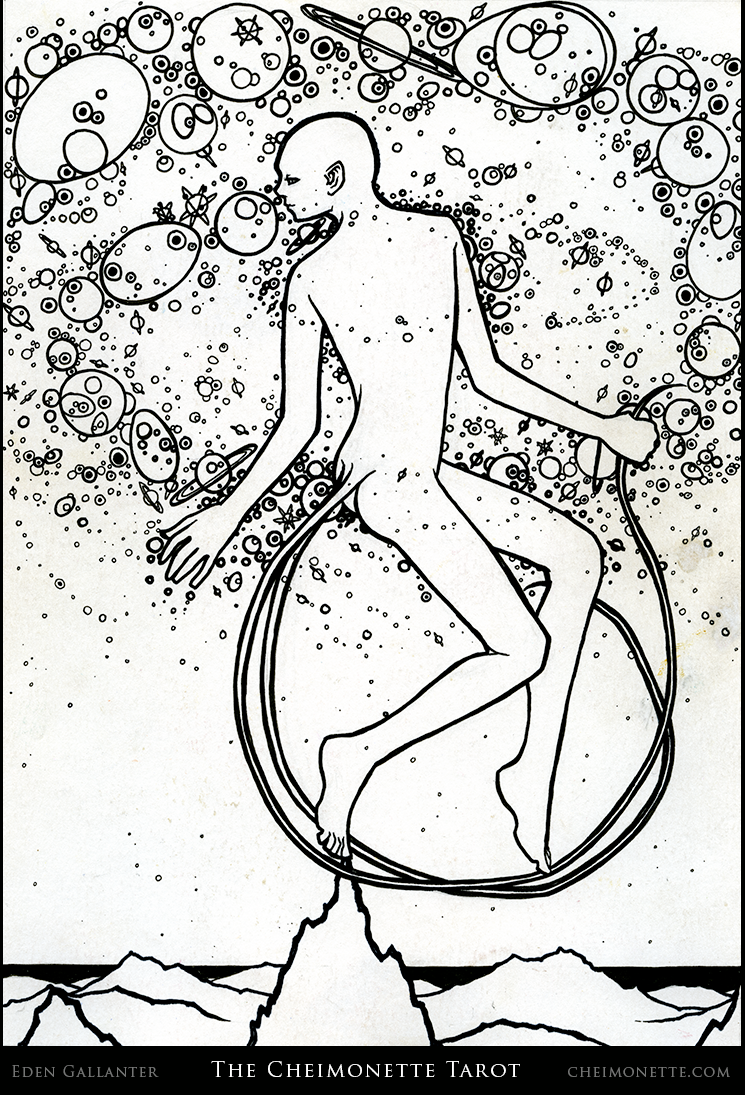 The Fool doesn't take on burdens, doesn't try to help or to fix problems or even to heal wounds. The Fool is simply the Fool, ignorant, self-centered, and unable to rise even one inch above personal survival. The Fool stands on the top of a mountain because to a Fool, every direction is down. Any little movement will decide the whole course of existence; the Fool will keep falling, and the direction of life from there on out will be initiated and perpetuated on its own, like a glacier slowly and irresistibly carving a canyon out of a high, rocky steppe.
The Fool doesn't take on burdens, doesn't try to help or to fix problems or even to heal wounds. The Fool is simply the Fool, ignorant, self-centered, and unable to rise even one inch above personal survival. The Fool stands on the top of a mountain because to a Fool, every direction is down. Any little movement will decide the whole course of existence; the Fool will keep falling, and the direction of life from there on out will be initiated and perpetuated on its own, like a glacier slowly and irresistibly carving a canyon out of a high, rocky steppe.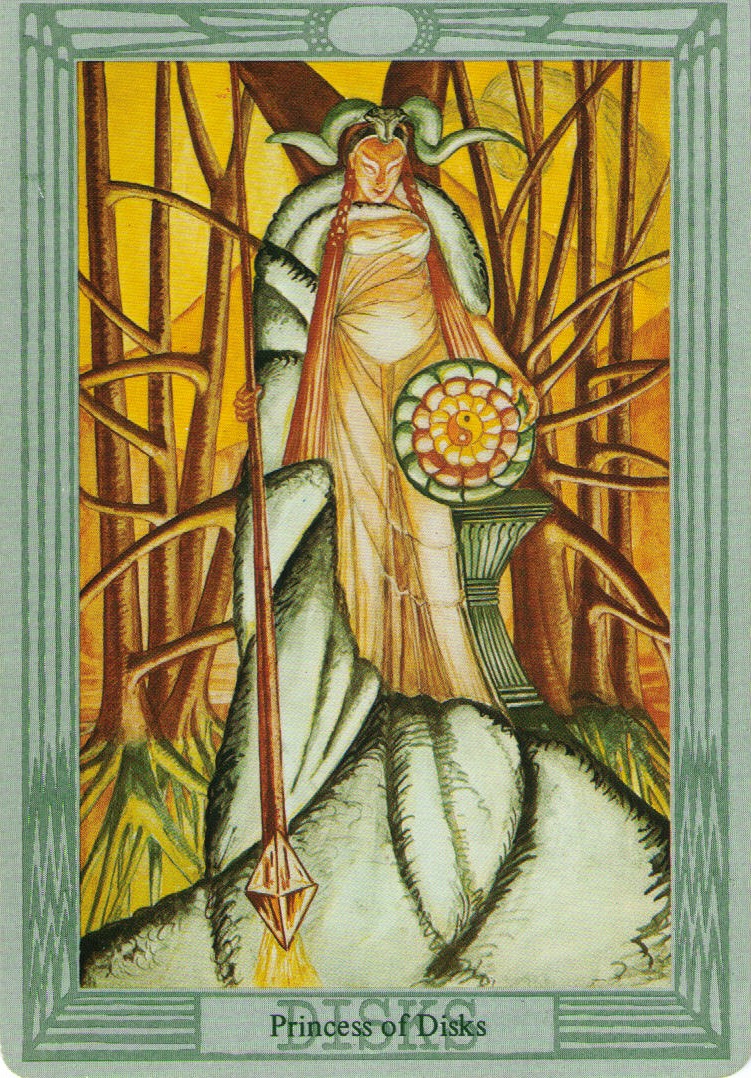 Beautifully painted by Lady Frieda Harris, apparently following exacting instructions from Mr. Crowley (who wrote a characteristically grandiose book about the tarot called "The Book of Thoth"), the Thoth tarot is enchanting. It is brimming with the images derived from an overwhelmingly rich experience of spiritual symbology, with a strongly Egyptian bent. Mr. Crowley himself was an odd man. Photos show him looking like a grim version of Christopher Lloyd. In the priestly raiment of the Order of the Golden Dawn (a prestigious occult society to which the poet Yeats belonged), he looked flamboyantly like a bouncer at the Luxor in Las Vegas. A feckless libertine, Mr. Crowley enjoyed a great deal of sex with both men and women, and was an enthusiastic user of recreational drugs. After dropping out of Cambridge, he wrote prolifically about his spiritual escapades while travelling widely across the globe. Having survived a fall off a cliff in China, a volcano eruption in Mexico, and bankruptcy over a lawsuit in England, Mr. Crowley, alone in the wake of a tragic family life, died of complications from heroin use.
Beautifully painted by Lady Frieda Harris, apparently following exacting instructions from Mr. Crowley (who wrote a characteristically grandiose book about the tarot called "The Book of Thoth"), the Thoth tarot is enchanting. It is brimming with the images derived from an overwhelmingly rich experience of spiritual symbology, with a strongly Egyptian bent. Mr. Crowley himself was an odd man. Photos show him looking like a grim version of Christopher Lloyd. In the priestly raiment of the Order of the Golden Dawn (a prestigious occult society to which the poet Yeats belonged), he looked flamboyantly like a bouncer at the Luxor in Las Vegas. A feckless libertine, Mr. Crowley enjoyed a great deal of sex with both men and women, and was an enthusiastic user of recreational drugs. After dropping out of Cambridge, he wrote prolifically about his spiritual escapades while travelling widely across the globe. Having survived a fall off a cliff in China, a volcano eruption in Mexico, and bankruptcy over a lawsuit in England, Mr. Crowley, alone in the wake of a tragic family life, died of complications from heroin use.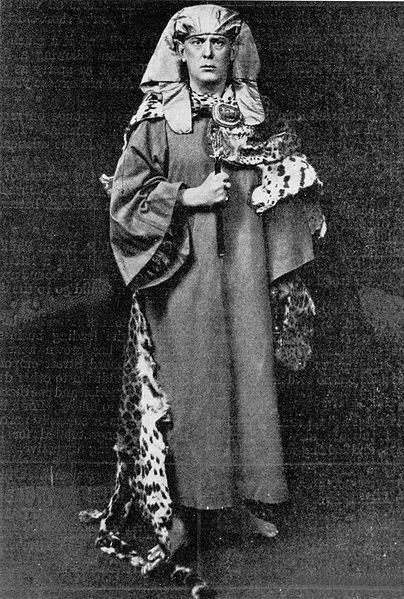

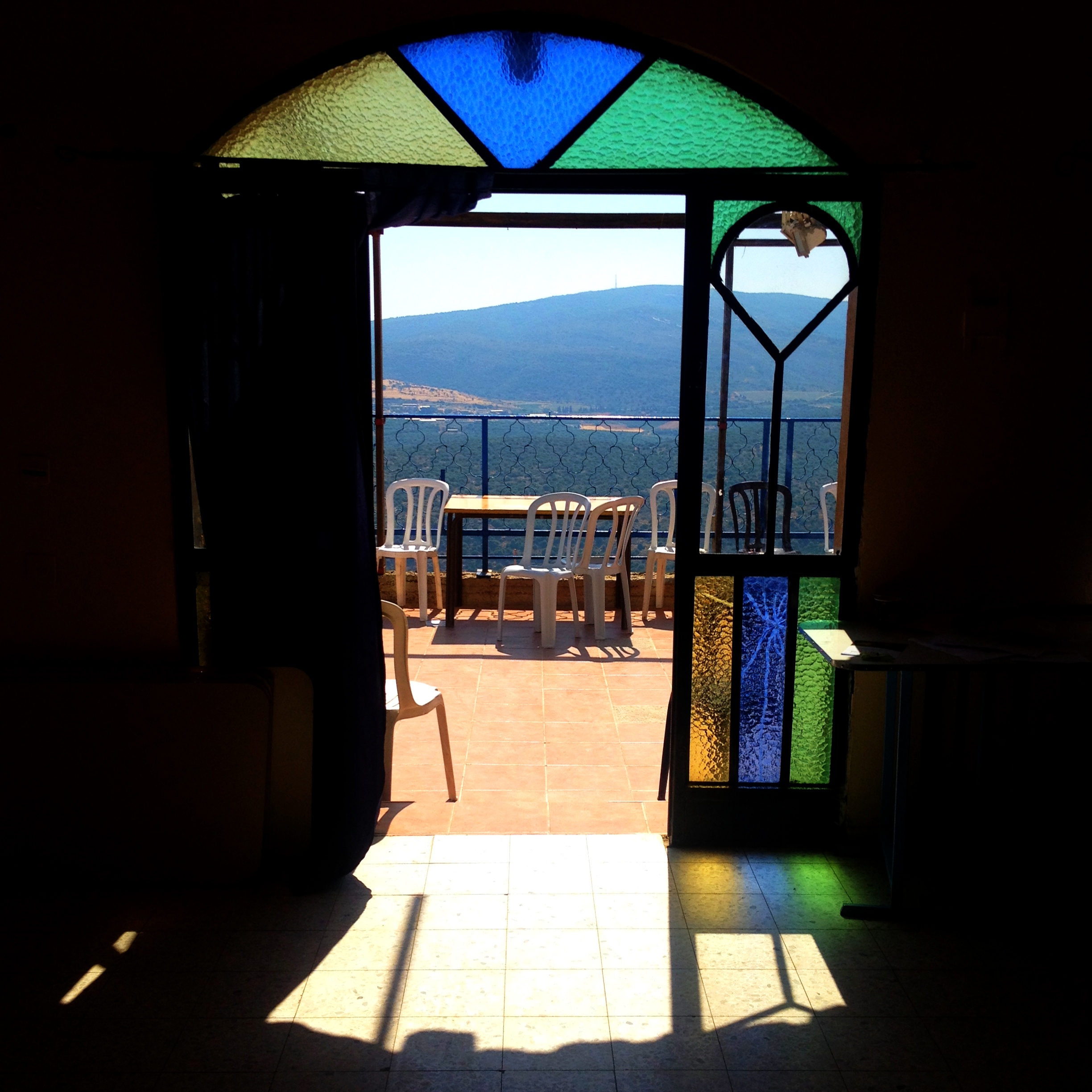 Last week I took a two-day trip to Safed, an ancient city in the northern Galilee. My main project at work is to spearhead the process of getting Safed's old city registered as a UNESCO World Heritage Site. My organization wants to help the city achieve this goal in an effort to make Safed into a pilot for Israel, an example of economic growth, inclusivity, and focus on regional assets. Safed is a lovely little city with a rich history in Jewish and Islamic mysticism, but it is also one of the most racist cities in Israel. It is a highly religious and segregated city with complex social issues and economic stagnation (currently 40% of the city's residents are on welfare). It's a city with three absorption centers for African immigrants, is over 99% Jewish in the city center, has a large Palestinian presence in its excellent college and Faculty of Medicine, and includes in its municipality the little village of Achbara, completely cut off from the Safed center. It's a complicated project, to say the least.
Last week I took a two-day trip to Safed, an ancient city in the northern Galilee. My main project at work is to spearhead the process of getting Safed's old city registered as a UNESCO World Heritage Site. My organization wants to help the city achieve this goal in an effort to make Safed into a pilot for Israel, an example of economic growth, inclusivity, and focus on regional assets. Safed is a lovely little city with a rich history in Jewish and Islamic mysticism, but it is also one of the most racist cities in Israel. It is a highly religious and segregated city with complex social issues and economic stagnation (currently 40% of the city's residents are on welfare). It's a city with three absorption centers for African immigrants, is over 99% Jewish in the city center, has a large Palestinian presence in its excellent college and Faculty of Medicine, and includes in its municipality the little village of Achbara, completely cut off from the Safed center. It's a complicated project, to say the least.